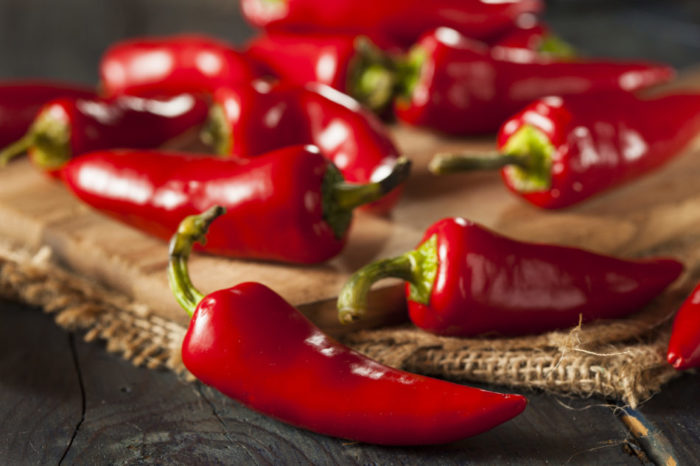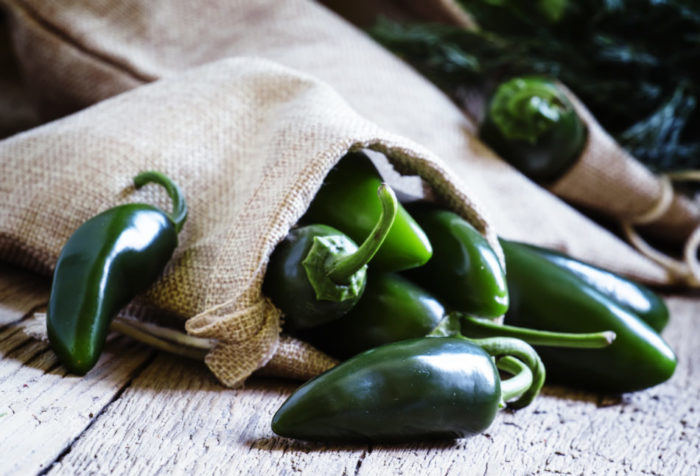A comparison of Fresno vs jalapeno pepper is pretty interesting. They are very distinct peppers, yet they can be so similar that it becomes difficult to tell them apart. Both these peppers have plenty of uses and can sometimes be used interchangeably.
It’s worth noting that they’re both very similar when they’re green. It’s common to use jalapenos when they’re green. Fresno peppers can be used green, but often they’re allowed to ripen to their fiery red color. At this stage, these peppers are very different from jalapenos in appearance and heat. Red Fresno peppers can get pretty hot and are usually hotter than the average jalapeno.
Differences Between Fresno Pepper And Jalapeno Pepper
Before we go into details on these popular chili peppers, let’s take a quick look at some of the differences you’ll see in both these chilis.
First off, there is a size difference, though it’s not that obvious. Both peppers are usually 2-3 inches long. However, jalapenos tend to be shorter. Additionally, Fresno peppers have thinner skin and tend to curve slightly. Jalapenos have a thicker skin and stay somewhat straight, with the skin providing support for the general shape.
Fresno peppers are usually plucked green, though sometimes, they’ll be allowed to ripen and turn red. When fully ripe and red, these peppers will show a higher heat and get a glossy finish. Jalapenos are generally used when green and it is rather rare to find jalapenos that have been allowed to ripen to a red color. Jalapenos too get hotter when red, though red jalapenos are seldom used.
Both peppers are rated mild to medium on the heat scale. Yet, Fresno peppers tend to be hotter with a rating of 2,500 to 10,000 SHU. Conversely, Jalapenos usually get a rating of 2,500 to 8,000 SHU, which means they pack slightly less heat than Fresno peppers.
What Is Fresno Pepper?

Fresno pepper is available in its green and red avatars. Either way, it has a length of about 2-3 inches and a diameter of 1-inch. The pepper curves slightly and the skin is somewhat soft and glossy.
As with most chili peppers, Fresno pepper has a sweet, fruity taste undertone. Yup, calling a hot pepper as fruity or sweet sounds a bit far-fetched, but it’s a property with most peppers. In fact, the world’s hottest chili pepper, the Carolina Reaper, has a distinctly sweet taste, well, at least before the hotness hits.
On the heat scale, the Fresno pepper gets a mild to moderate rating. The green peppers tend to be on the milder side, while the red Fresno pepper is fairly hot. In the general sense, Fresno peppers usually hit 2,500 to 10,000 SHU (Scoville Heat Units).
It’s worth noting that while the technical rating is mild to moderate, most people will find these chili peppers to be fairly hot and spicy.
What Is Jalapeno Pepper?

Jalapeno Pepper is another popular ingredient used in several recipes including salsa, pickles, and even pizza toppings. Its appearance is quite similar to Fresno peppers. Though Jalapeno peppers have a length of 2-3 inches, they usually tend to be shorter. The pepper doesn’t curve and has a relatively straight body. This is partly due to jalapenos having a thicker skin, which helps them stay straight.
They have a brighter, earthier taste. Jalapeno peppers have a bit of sweet touch too, though it’s not as pronounced as that in Fresno peppers. When ripe, jalapenos take on a red appearance and increase in heat. However, for most culinary uses, green peppers are the primary choice.
This means that though you can get red jalapeno peppers, it’s very likely that your recipe calls for a green version. As such, you’re more likely to see green jalapeno peppers and the red ones are pretty rare.
Jalapeno peppers tend to pack slightly less heat than Fresno peppers, although not by much. These peppers are rated between 2,500 to 8,000 SHU and are usually seen as mild to medium peppers. Again, it’s worth remembering that though the rating is mild to medium, these can be significant for most palates.
FAQs And More For Jalapeno vs Fresno Peppers
Are Fresno Peppers Hot?
The hotness of chili peppers is measured on the Scoville Scale, which presents Scoville Heat Units (SHU). According to this scale, Fresno peppers are ranked as mild to medium-hot. On this scale, Fresno peppers usually score somewhere between 2,500 to 10,000 SHU.
This variation exists because the heat can vary depending on individual peppers, their growth region and environment, and the ripeness of peppers. While it is common to use green Fresno peppers, they’re also used when they are ripe and take on a bright red color.
Ripe (and red) Fresno peppers are usually hotter than green Fresno chili peppers.
When To Pick A Jalapeno Pepper?
The best time to pick jalapeno peppers is when they’re about three inches long and have a deep green color. Usually, the peppers start with a green color. At this point, they’ll be small in length, though they will eventually reach somewhere around three inches in length.
As they age, these peppers will turn to a deep green color. This is the right time to pick a jalapeno pepper. They can be quite mild when they’re a conventional green color. On the other hand, ripened and red jalapenos aren’t really the best pick for most recipes. A deep green color is a good indicator that the pepper is ready for picking.
What Is Similar To A Fresno Pepper?
If you’re in a fix and need a quick substitute for Fresno peppers, it’s best to look for chili peppers that present a similar flavor, color, and heat. In most cases, jalapeno peppers can be an ideal substitute for Fresno peppers.
Although, if you prefer, you can use other alternatives and substitutes as well. These include, chipotle peppers, serrano peppers, habanero peppers, tien tsin, and conventional red chili peppers.
Making The Most Of This Comparison
As we see in this Fresno vs jalapeno pepper comparison, both these peppers have remarkable similarities and present excellent flavor and decent heat. We note some differences between these peppers that set them apart and are useful components to get the most out of these ingredients.
